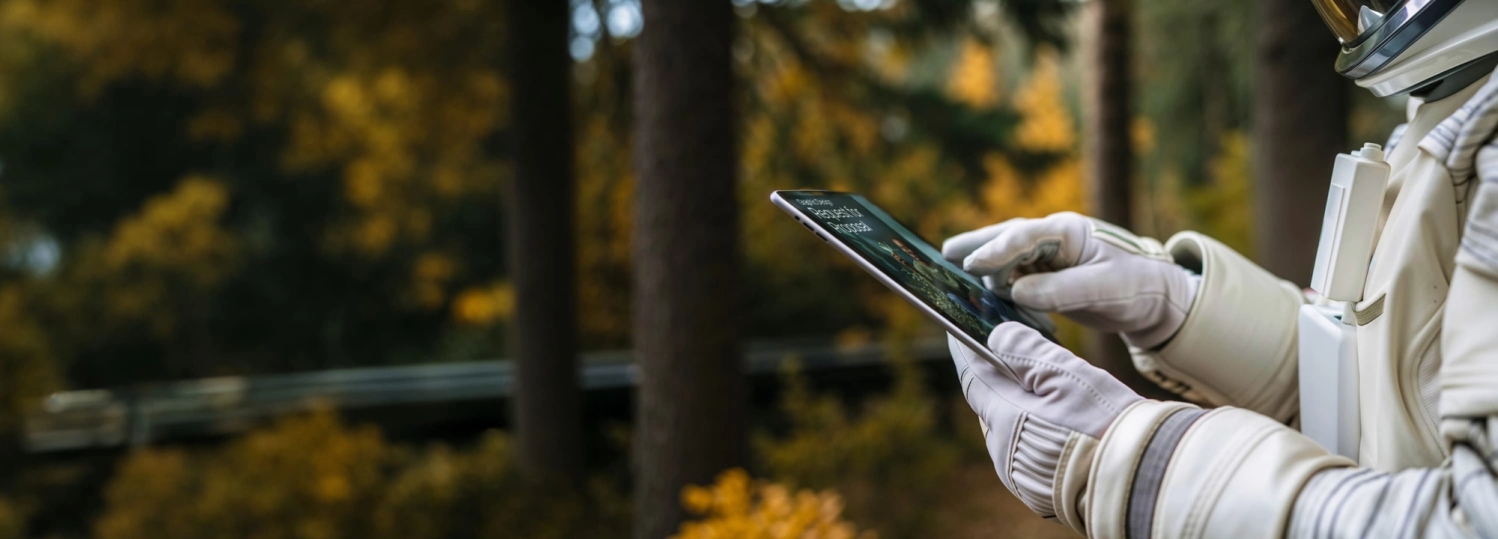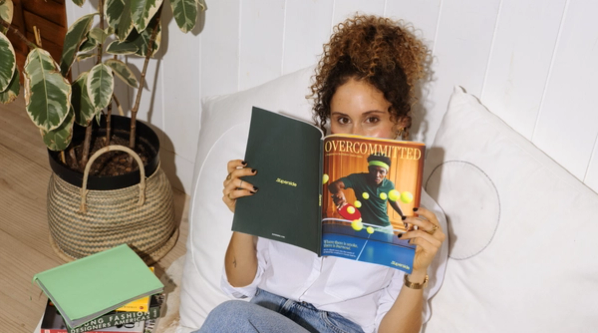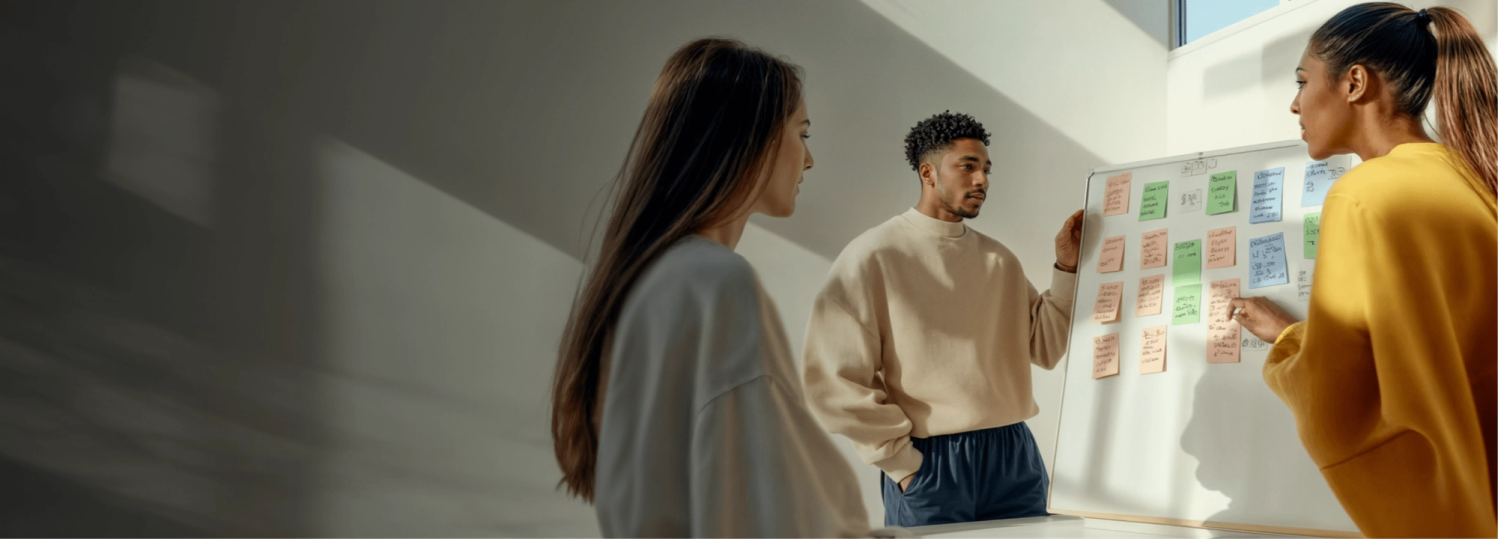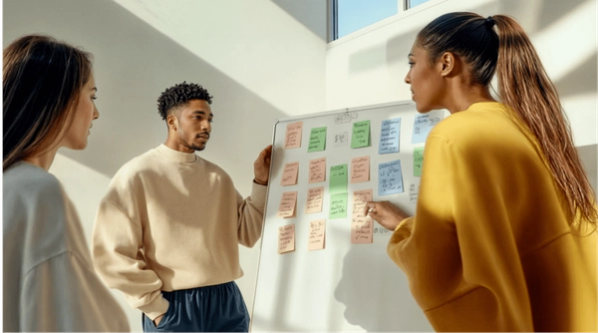
You’ve issued your graphic design RFP and all the responses have come in. Now it’s time to compare the bids. Superside Chief Revenue Officer, Paal Stokkelien, walks you through what comes next.
Enterprise companies use graphic design requests for proposals (RFPs) as part of a coherent, systematic process for evaluating prospective outsourced creative partners.
Once a creative services RFP has been issued and the prospective partners have submitted their responses, it’s time to objectively compare these bids based on key criteria ranging from the quality of the creative to how each partner best supports your team.
In this article, I’ll provide an overview of five main steps in comparing RFP responses.
5 steps for comparing creative service RFP responses
Experience has taught me that evaluating RFP responses can be broken down into five steps—providing a repeatable framework that you can continually leverage and refine to find ideal creative partners.
Step 1: Establishing comparison criteria
While this article is about comparing graphic design RFP responses, the time to determine your key points of comparison is while you’re planning and preparing to issue the creative services RFP itself.
As you gather information and start writing the RFP for graphic design services, you’ll quickly see how areas like the scope of work (SOW) and submission guidelines inform the evaluation criteria, such as:
- Creative capabilities
- Experience level/expertise
- Return on investment (ROI)
- Use of innovation, such as AI
- Customer enablement
- Culture and reputation
- Scalability
Once you have a working draft of your evaluation criteria, share it with the stakeholders participating in the review process—letting you flag concerns and align on the variables well in advance of receiving the bids.
Helpful resources
My graphic design RFP best practices article takes you through each main section of a graphic design RFP and includes a checklist, which you can also download below. (If you don’t already have a go-to format for your RFP, we also created a list of creative services RFP templates.)
Step 2: Developing a clear review process
Enterprise RFP processes involve multiple stakeholders, such as creative leads, marketing leads, procurement, accounting, legal and IT.
As you look toward evaluating creative partner responses, determine who’ll review the bids and which parts of the proposals these individuals will be responsible for. You’ll also want to provide well-defined instructions along with the scoring matrices (see the next section) to ensure clarity, consistency and timeliness.
Pro tip: Be granular with your review process. Set expectations right from the start, sharing how long each stakeholder will have to review, if the work will be independent or collaborative and which factors will carry the most weight toward the final decision.
Step 3: Creating scoring systems
Beyond the non-negotiables, such as failing to submit on time, demonstrate a basic understanding of the request or provide all the required information, scoring systems give you a way to quantitatively compare the responses.
As you build your spreadsheet-based ranking tools, you’ll likely use a combination of simple and weighted scoring.
Simple scoring
Simple scoring is used for evaluating basic criteria. For instance, the example below shows how simple scoring can be used to capture comparison points on strategic alignment, appropriate range of creative services and level of expertise.
Example: Simple scoring matrix
| Criteria | Partner A | Partner B | Partner C |
|---|---|---|---|
| Strategic alignment | Yes | Yes | No |
| Appropriate creative capabilities | Yes | No | No |
| Level of expertise | Yes | No | Yes |
Weighted scoring
Assigning percentages to specific variables or sets of criteria, weighted scoring lets you further assess the responses, prioritizing the most important factors. In the example below, creativity has been weighted at 50% of the overall score and a breakdown has been given on how the different variables add up.
Example: Weighted scoring matrix for creativity
- Each varliable is given a score from 1 to 10.
- Each vendor is given a final score of X/50.
| Creativity | ||||||
|---|---|---|---|---|---|---|
| Criteria | Quality | Strategy | Execution | Services | Expertise | Total |
| Vendor | 6 | 5 | 7 | 5 | 4 | 27 |
Qualitative data
In addition to the hard data, allowing for subjective information, like giving a space for reviewers to add comments can help you capture details that you hadn’t previously outlined or identified.
Example: Qualitative data field
| Additional thoughts and comments: |
|---|
| Please share any additional thoughts or comments not covered by the scoring criteria. Include criteria that might be valuable for future RFPs. |
Pulling it all together
Keep in mind how you’ll be combining all the different scores into one final comparison document. Ensure you check your formulas and run practice tests before rolling out the scoring matrices to stakeholders.
- Discuss discrepancies
If, as you work, you notice that stakeholders are interpreting certain criteria differently, flag the issue, gather perspectives and provide clarification as quickly as possible. - Update or adapt criteria
If you discover that your criteria has shifted based on the responses, notify the participants so that they’ll have an equal opportunity to demonstrate competence. For instance, if one vendor proposes user-generated video (USG) as an extension of the SOW, and you now feel strongly about including USG content. It’s only fair to give others the chance to share their thoughts and expertise.
Step 4: Evaluating service models
Change is a constant in our industry. While agencies have a long-standing record as creative partners, newer service models, like creative subscriptions, have evolved to better meet the needs of high-growth brands and overcommitted in-house creative teams.
As you review your RFP responses, consider how the type of creative partner you choose impacts your goals and objectives—especially your ability to produce effective, high-quality creative.
The following creative partner comparison criteria can be used to develop a simple or weighted scoring matrix to assess best-fit solutions.
Efficiency
The question to answer: Can this partner deliver high-quality creative at the pace of modern business?
Key factors:
- Response and delivery times
- Optimized workflows
- Use of innovation, such as AI
- Proof points—performance statistics, case studies, industry reports, etc.
Expertise
The question to answer: How does this partner compare based on level of creative talent and range of services?
Key factors:
- Talent—experience levels, talent pool size and scope (local or global), breadth of perspectives, availability
- Services—scope of services and how well they meet your needs and extend capacity
- Sourcing and scoping—fully managed or requires oversight
- Knowledge and experience with your industry
Support
The question to answer: How well will you and your team be supported?
Key factors:
- Customer enablement—human and technological
- Project management, collaboration and communication
- Tech stack and integrations
- Commitment to spotting opportunities and driving ongoing improvements
- Satisfaction levels—ratings, reviews and testimonials
Cost-effectiveness
The question to answer: While not always an apples-to-apples comparison, consider the pricing model (retainer or subscription) and overall ROI.
Key factors:
- Transparency—knowing what you’re paying for:
- How these dollars will be used.
- How this information will be shared.
- Access to creative talent and services—full or limited.
- How change-related costs are addressed.
- The level of flexibility and adaptability built into the relationship.
Scalability
The question to answer: Is this partner a long-term solution?
Key factors:
- Ideally suited for the demands of in-house creative teams.
- Fulfills the full scope of the current and future creative services RFPs.
- Can step in at any stage of the creative process from strategy to execution.
- Supports high-speed, high-volume iteration across multiple channels and markets.
- Extendible to multiple internal teams.
Step 5: Making your choice and getting to work
Once you’ve identified the winner, thank all of the respondents for their time and participation and notify the successful partner. As an immediate follow-up, outline the contract details and next steps for the winner to ensure ongoing clarity as you move from the theoretical to the real world of starting to work together.
Strong creative partnerships make a world of difference for in-house teams—letting you focus your talents more effectively while scaling creative and driving growth. I wish you all the best in your graphic design RFP process. And, if you��’d like to learn more about Superside, please don’t hesitate to reach out.




















